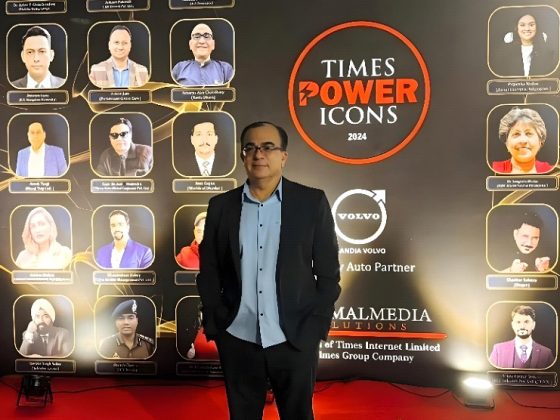10 Ways To Shape The Future Of Consumer Experience By Vatsala Dhawan Head Of Brand Solutions Moksha Media Group
“EMERGING TRENDS: SHAPING TOMORROW’S FMCG SOLUTIONS.”
The FMCG industry is evolving rapidly in response to emerging trends that prioritize sustainability, digitalization, and enhanced customer experiences. A key shift is the growing demand for eco-friendly packaging and sustainable product development, driven by increased climate awareness among consumers. Companies are adopting recyclable, compostable materials and using cruelty-free ingredients to meet these preferences. Additionally, digitization is transforming the industry, with AI tools like recommendation engines and chatbots enhancing personalized customer interactions and improving operational efficiency.
The rise of e-commerce, accelerated by the pandemic, is reshaping distribution strategies, with social media platforms and direct-to-consumer channels becoming essential sales drivers. IoT and 3D printing are further revolutionizing the sector by enabling better inventory management and sustainable production methods. The booming middle class in emerging markets like India presents significant growth opportunities, especially in Tier 2 and Tier 3 cities, where rising disposable incomes are fueling demand for FMCG products. These trends are creating new avenues for growth and competitive advantage in the industry.
“UNIFIED VISION: COLLABORATING FOR SEAMLESS BRAND STRATEGIES.”
The approach to collaborating with other departments for cohesive brand strategies starts with understanding who the key stakeholders are and how their roles align with the brand’s objectives. Taking time to learn about their goals, challenges, and expectations, ensuring that everyone has a clear understanding of each other’s priorities, is necessary. This insight helps craft strategies that are not only aligned with the brand’s vision but also support broader business objectives. Moreover, it is important to involve stakeholders in the planning process, inviting them to brainstorming sessions and feedback loops. This collaborative environment fosters creativity and ensures all perspectives are considered. Communication is vital, so one should maintain regular and transparent updates through project management tools, chat apps, or shared platforms – ensuring everyone is on the same page. Finally, sharing the results and insights to demonstrate the impact of the collective efforts and learning from both successes and areas for improvement helps in keeping the stakeholders driven.
“CREATIVE INNOVATION, PRACTICAL EXECUTION: THE PERFECT BRAND BALANCE.”
Excelling in brand solutions lies in balancing creativity and practicality. Creativity keeps the brand fresh, edgy, and distinct in a crowded market, while practicality ensures you reach the right audience and drive business results. Without innovation, your brand risks blending in; without practicality, it struggles to thrive. Effective brand solutions require managing both internal and external stakeholders, aligning their insights, and collaborating to craft strategies that are both innovative and executable. It’s this blend of creative vision and practical execution that creates impactful, sustainable brand strategies.
“TURNING SKEPTICISM INTO TRUST: CRAFTING CREDIBLE PRODUCT LAUNCHES.”
Handling consumer scepticism around new product launches requires a strategic, customer-focused approach. First, it’s crucial to understand the market segment you’re targeting, as different groups have varying levels of openness to innovation. Innovators and early adopters are more willing to take risks, while the early and late majority may need more convincing. Tailoring your messaging to address these differences helps build trust.
To overcome scepticism, establish credibility by showcasing testimonials, endorsements, and real-life case studies that demonstrate your product’s effectiveness. Highlight how your product addresses specific pain points and how it offers clear benefits over existing alternatives.
Anticipating objections is key—acknowledge concerns upfront, provide clear explanations, and offer comparisons to reassure customers. Finally, reduce perceived risks by offering incentives, promotions, or guarantees. This can help ease doubts and encourage trial, ultimately building confidence in your new product.
“SUBSCRIPTION MODELS: THE FUTURE OF FMCG CONVENIENCE AND LOYALTY.”
Yes, the FMCG industry is likely to see more subscription-based services in the future. Consumers are increasingly looking for value for money, which subscription models can offer through cost-effective pricing and product quality. Convenience plays a big role too, as subscriptions save time and effort by delivering products directly to consumers’ doors.
Additionally, the rise in customization options, where customers can tailor their subscriptions to suit specific needs, enhances the appeal. Subscription boxes also offer a sense of discovery and excitement, with many consumers enjoying the surprise element. For eco-conscious shoppers, subscription models focused on sustainability, such as eco-friendly packaging and responsibly sourced products, are becoming more attractive. As these consumer preferences continue to evolve, subscription services in FMCG will likely thrive, offering both convenience and a personalized, sustainable shopping experience.
“SENSORY TECHNOLOGY: DEEPENING EMOTIONAL CONNECTIONS THROUGH EXPERIENCE.”
Sensory technology will revolutionize how brands emotionally connect with consumers by tapping into the five senses—sight, sound, smell, touch, and taste—to create immersive, memorable experiences. By appealing to sensory stimuli, brands can trigger emotional responses and positive associations, fostering deeper connections with consumers. Technologies like virtual reality (VR) and augmented reality (AR) open new opportunities for brands to offer interactive, multisensory experiences, engaging customers in ways that align with their values and preferences. This creates not only stronger brand loyalty but also increases the likelihood of repeat purchases as customers emotionally invest in these rich, sensory-driven experiences.
“ROBOTIC RETAIL ASSISTANTS: REVOLUTIONIZING CONVENIENCE AND PERSONALIZATION IN FMCG.”
Robotic retail assistants could significantly enhance the FMCG shopping experience by improving customer convenience and satisfaction. These robots can offer real-time assistance, providing product information, guiding customers, and even making personalized recommendations, all of which can elevate the shopping journey. With 24/7 availability, robots ensure that customers receive support outside of regular store hours, further enhancing accessibility and reducing wait times. Moreover, robotic assistants can collect valuable data on customer preferences and behaviours, helping retailers tailor experiences and improve loyalty. However, challenges remain, such as limited adaptability and customer resistance, as some shoppers may prefer human interaction over technology. Additionally, security concerns, including data privacy and cybersecurity risks, must be addressed. Balancing the benefits of enhanced customer service with these potential drawbacks will be key to successfully integrating robotic assistants in the FMCG sector. Done right, these assistants could transform how brands engage with customers, making shopping more efficient and personalized.
“CROWD-SOURCED FEEDBACK: SHAPING FMCG INNOVATION IN REAL-TIME.”
FMCG brands can leverage real-time crowd-sourced feedback to accelerate product development by tapping into a broad range of consumer insights. Crowdsourcing allows brands to gather valuable data on customer preferences,expectations, and behaviours, including aspects like product quality, sustainability (ESG), and media engagement. This feedback can inform everything from product formulation to marketing strategies, ensuring offerings align with consumer desires. Involving consumers in the development process fosters brand loyalty, as they feel more connected and valued. Additionally, real-time store checks by crowds of shoppers can help brands monitor product placement and marketing effectiveness, providing instant insights to refine strategies.
“REAL-TIME DATA: SHAPING THE FUTURE OF FMCG PRODUCT INNOVATION.”
The future of FMCG will likely see brands creating products based on real-time consumer data. As consumer preferences rapidly evolve, data analytics will enable brands to adapt quickly, optimizing product development, packaging, and marketing strategies. By analyzing real-time purchasing patterns, behaviours, and trends across both direct sales and e-commerce, brands can tailor products that better align with consumer needs. This dynamic approach not only enhances innovation but also improves supply chain management and inventory forecasting. Ultimately, leveraging real-time data will allow FMCG companies to stay ahead in a competitive market by making smarter, faster decisions and driving better customer satisfaction.
“HYPER PERSONALIZED FMCG: TAILORING PRODUCTS TO EVERY CONSUMER’S NEEDS.”
Hyper-personalized FMCG solutions are becoming increasingly attainable as brands leverage customer data, AI, and analytics to tailor every aspect of the consumer journey. This approach allows brands to anticipate customer needs, offering tailored products, services, and marketing at the right moment. While we’re not fully there yet, advancements in automation and real-time data are rapidly bringing us closer to this reality. Hyper-personalization will not only enhance customer satisfaction but also foster deeper emotional connec tions, driving loyalty and boosting sales. The future of FMCG will rely heavily on hyper-personalization to stand out in a crowded market and create meaningful consumer experiences.








